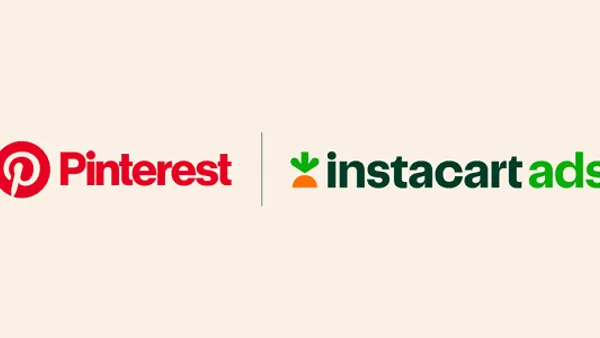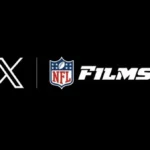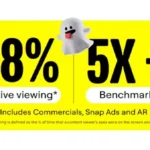Pinterest is leveling up its advertising and commerce capabilities through a strategic partnership with Instacart, a leading grocery technology platform. This collaboration allows Pinterest advertisers to leverage Instacart’s real-world purchase data for hyper-targeted advertising, while enabling direct-to-doorstep shoppable ads that streamline the path from inspiration to transaction.
This marks a significant evolution in Pinterest’s ambition to become more than a visual discovery tool—it positions the platform as a performance-driven commerce engine, especially for food, CPG, and lifestyle brands.
Closing the Gap Between Discovery and Delivery
Pinterest users turn to the platform for inspiration—planning meals, curating lifestyle goals, and saving product ideas. But turning that intent into action has often required several steps. Through this new integration with Instacart, Pinterest is removing that friction.
Advertisers will now be able to:
- Target based on real shopping behavior, not just user interests
- Connect with high-intent buyers who are actively spending in relevant categories
- Deliver seamless shopping experiences that let users buy what they discover with just a few clicks
According to Instacart:
“Select Pinterest advertisers will be able to reach Instacart’s first-party audience segments, built from real-world retail purchases, enabling greater precision and higher conversion opportunities.”
In the near future, the companies also plan to launch closed-loop measurement capabilities, allowing brands to link Pinterest ad impressions directly to completed transactions on the Instacart Marketplace—providing clear visibility into return on ad spend (ROAS).
Why It Matters: Real-Time Commerce Signals in Action
Instacart works with more than 1,800 national and regional retailers, facilitating grocery delivery, pickup, and eCommerce from nearly 100,000 North American stores. This means Pinterest advertisers will gain access to first-party data rooted in real consumer behavior—not modeled insights, but actual purchase decisions.
This elevates Pinterest’s value proposition for advertisers across multiple industries:
- CPG brands can reach users who frequently buy specific grocery items or product categories
- Beauty and wellness brands can engage consumers who’ve shown recent spending behavior in related areas
- Meal kit companies and restaurants can activate ads during peak recipe searches tied to Instacart purchasing signals
This data-driven integration shifts Pinterest from a discovery platform into a predictive commerce channel.
Shoppable Ads Redefined: Inspiration That Converts Instantly
Alongside improved targeting, this partnership introduces a game-changing commerce feature—fully shoppable Pinterest ads powered by Instacart’s fulfillment network.
Imagine a user saving a smoothie bowl recipe, and immediately being able to order all the ingredients via Instacart—without ever leaving Pinterest. Or pinning a beauty tutorial and instantly checking out with the featured products for same-day delivery.
“Imagine pinning a cocktail recipe and ordering the ingredients instantly. Or discovering a clean beauty brand and having it at your door in 30 minutes.”
This instant gratification, built directly into the discovery process, creates a frictionless purchase funnel that aligns with how modern consumers shop: visually, socially, and impulsively.
Pinterest’s Growing eCommerce Ecosystem
This announcement continues Pinterest’s steady evolution into a transactional, commerce-ready platform. In recent years, the company has rolled out:
- Product Pins and Catalog uploads for retailers
- Visual search tools with AI-powered recommendations
- Shop tabs and personalized shopping feeds
- Retail partnerships with brands across fashion, home décor, and beauty
The Instacart partnership adds a new dimension—utility, fulfillment, and conversion. It doesn’t just make products discoverable; it makes them deliverable.
While Pinterest may never rival Amazon’s scale, its strength lies in contextual commerce—selling products where they’re wanted most, right at the moment of inspiration.
A Strategic Win for All Sides
This collaboration is more than a technical integration—it’s a strategic alignment between two platforms deeply rooted in consumer intent:
- Pinterest fuels lifestyle discovery and product interest
- Instacart captures high-intent, high-frequency purchase behavior
Together, they form a closed loop from idea to action.
Advertisers benefit from:
- High-intent audience segments with real buying power
- Clear attribution and performance metrics
- Enhanced ROI through lower-funnel conversions
Pinterest benefits by increasing its advertiser value proposition with real commerce outcomes.
Instacart benefits by entering the inspiration phase of shopping behavior, intercepting demand before it even enters the cart.
And ultimately, consumers win—with a seamless, visual-first shopping experience that connects what they want with how they live.
Conclusion: The Future of Ad Targeting is Transactional
Pinterest and Instacart’s partnership marks a clear step forward in the evolution of performance commerce—where inspiration, targeting, and fulfillment exist in a single, fluid ecosystem.
For marketers, the takeaway is clear: The future of advertising isn’t just about being seen. It’s about being seen by the right people, in the right context, with the ability to act immediately.
As Pinterest continues to expand its commerce integrations and close the loop between pinning and purchasing, its role in the digital marketing mix will only become more central—for brands that want not just awareness, but action.




